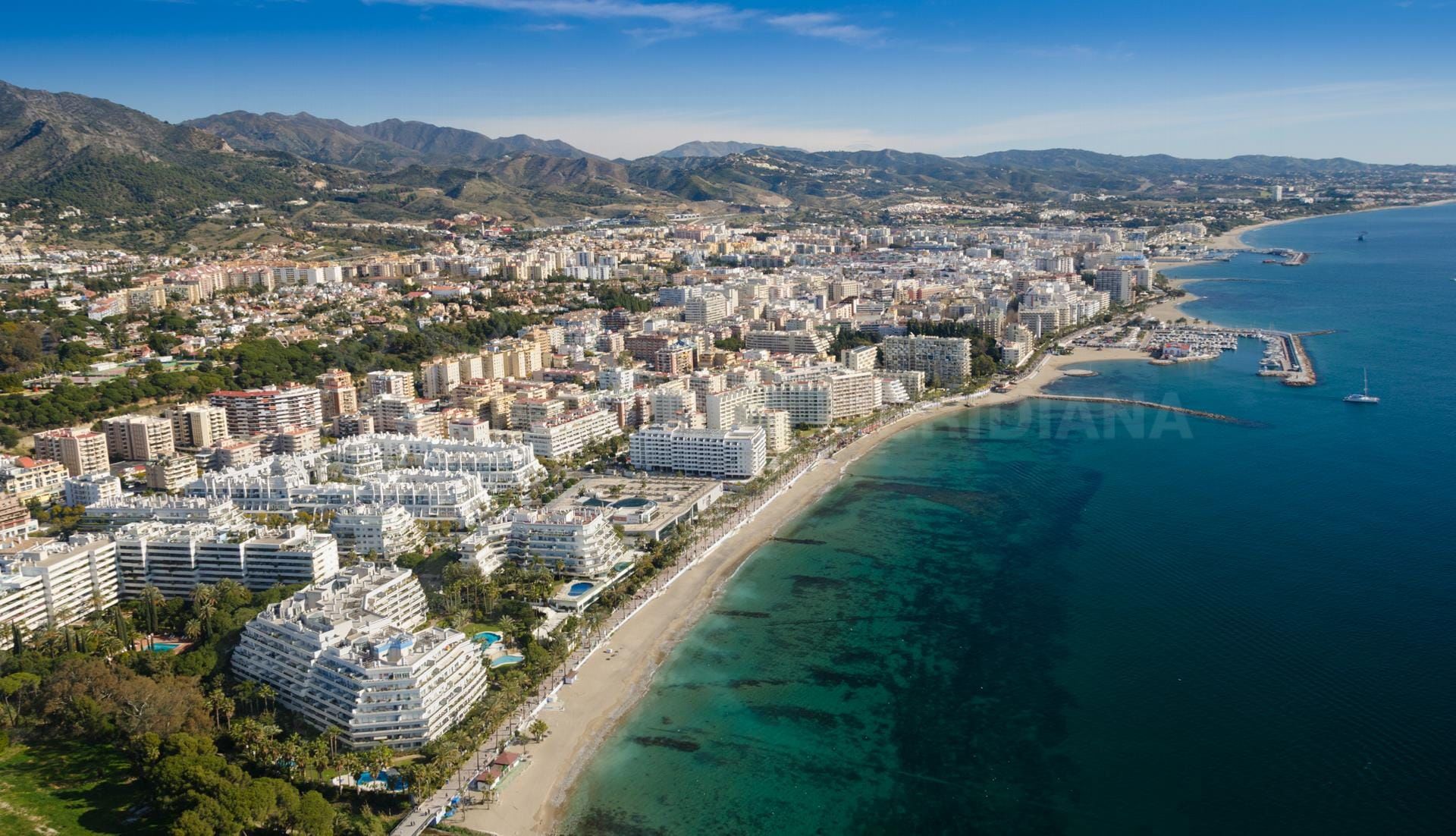Property News
SPAIN AND COSTA DEL SOL RESIDENTIAL PROPERTY MARKET REPORT 2016
For the second year, Terra Meridiana has compiled a summary of the developments and trends in the property markets on the Costa del Sol and across Spain in 2016.
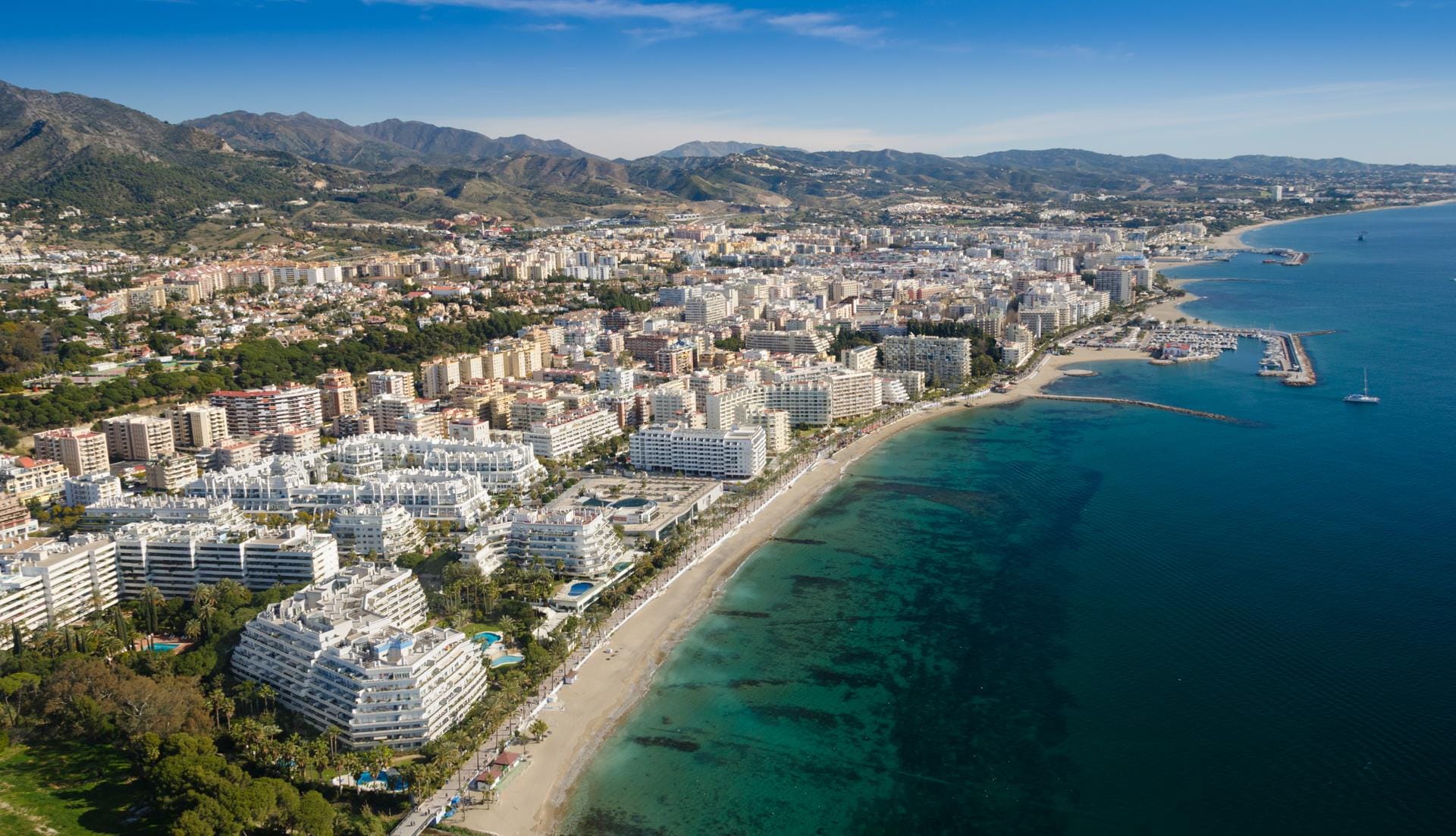
We use data that is published by official sources (including Notaries, Registrars, the National Statistics Institute (Instituto Nacional de Estadística, INE), and the Ministry of Public Works (Ministerio de Fomento)) over the last decade to track key indicators, calculate changes, and provide insights for buyers and sellers about the market’s past and present, as well as offer our ideas about where it may be heading in the future.
Over the past 10 years, the Spanish residential real-estate marketplace has essentially halved in size, in terms of both the number of transactions and average house price. This had as much to do with the unsustainable rates of growth that were registered in the ‘property bubble’ years of the early to mid-2000s as the sharp correction that took place between 2008-13, when the market finally bottomed out.
In the last three years, however, we have seen a slow, but sure, recovery taking place across the country, with demand particularly strong in the areas traditionally most favoured by overseas investors. This includes most of the local markets on the Costa del Sol where we work, including Marbella, Estepona, and Benahavís.
Spanish property sales have grown for the third consecutive year, with a jump of over 14% in the last 12 months, although the total is 45% less than a decade ago
In 2007, the number of properties that changed hands in Spain registered a decline for the first time in years, after reaching a record high in the previous 12-month period. That marked the start of a seven-year decline in the volume of sales until 2013. Since then, the market has returned to an upward trend, registering double-digit annual gains since 2014, with a 14.1% increase in 2016 to reach a total of 457,689 properties sold.
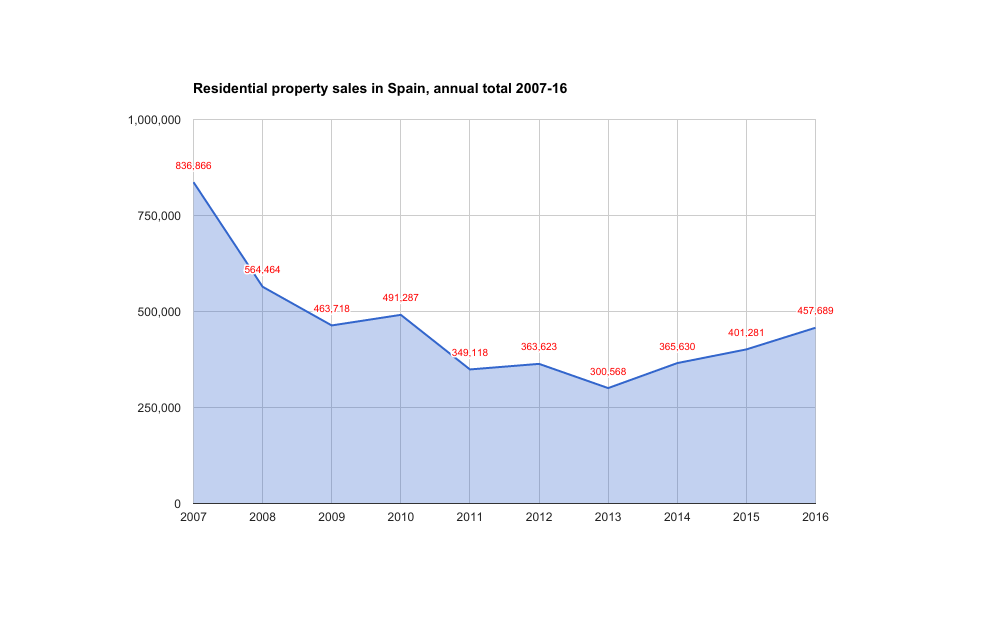
Terra Meridiana’s view: Three years of year-on-year growth is good news for the national real-estate market as a whole. National demand is rising, as the banks are once again offering mortgages freely and interest rates remain low, while overseas buyers continue to flock to Spain, drawn by what many now see as undervalued properties in a secure market for investment.
Sales in two of Terra Meridiana’s Costa del Sol markets have dropped slightly this year, but overall demand remains strong
Despite slight declines in the number of residential transactions registered in the last year in Marbella and Benahavís, when compared to the results of the last ten years, total sales were still on par with 2007.
Marbella – Sales were down by 10% year-on-year, from 4,435 in 2015 to 4,001 in 2016, although that is still comfortably higher than the 2007 total of 3,568 and close to twice the amount sold in 2008.
Estepona – The number of properties sold rose by 3% in the last 12 months to reach 2,123, more than double the number sold in 2009, although the total is still 18% lower than in 2007, the best year on record.
Benahavís – The limited size of the local market and its reliance on high-end foreign buyers make Benahavís subject to greater fluctuation that larger, more diverse areas. The number of sales recorded was 15% lower for the year, compared to 2015, but more than double the slowest year of the last decade in 2011.
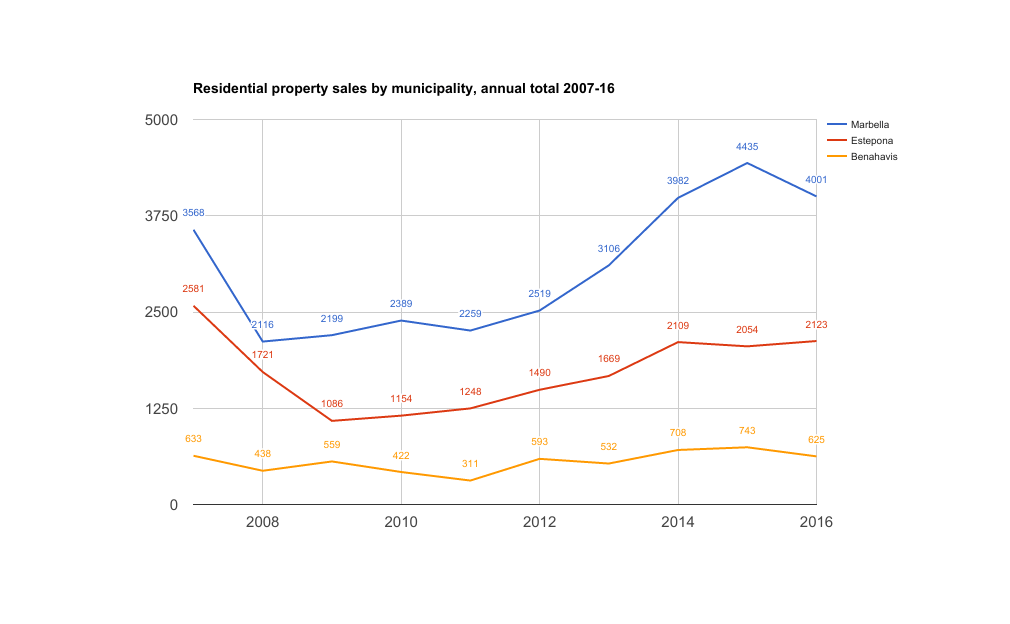
Terra Meridiana’s view: The effects of the UK’s Brexit referendum are beginning to be felt in many of the markets nationwide that are popular among British buyers, although other nationalities are fast making up the shortfall. While the Costa del Sol saw the signs of the slowdown in sales sooner than the rest of the country, it was also one of the first areas to recover and continues to be a premium destination for overseas investors.
The market composition remains skewed toward resale housing in comparison with a decade ago, due to the dearth of new construction since the crisis began
Back in 2007, the share of resale properties sold across Spain represented around 53% of the total open marketplace (not including ‘protected housing’), as buyers increasingly preferred to invest in the huge offer of new-build homes available, often purchasing off-plan and selling on before completion. By contrast, the number of new properties sold last year was the lowest figure in a decade, accounting for just over 9% of the open market.
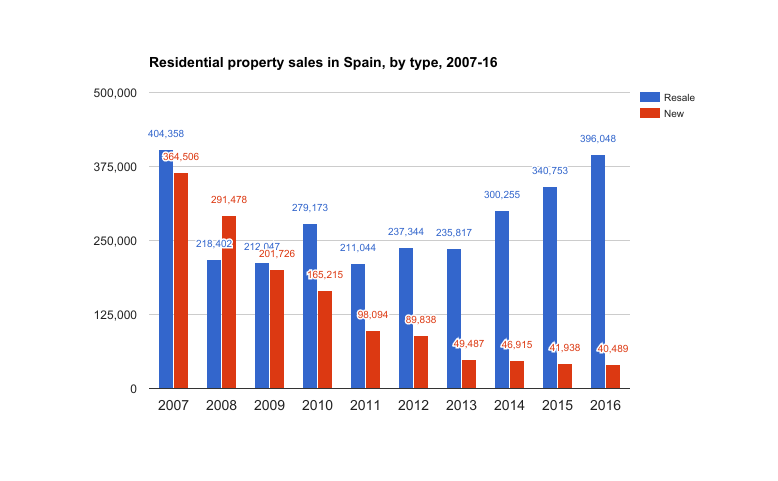
Terra Meridiana’s view: The building boom of the early 2000s left Spain with as surplus glut of new housing, often located in more marginal areas around big cities. After the bubble burst, both builders and buyers saw financing dry up and, as a result, new construction essentially ground to a halt. Resale properties, which are usually in established locations and benefit from existing services, have remained popular with national and overseas buyers, although a growing number of projects are now under development in our Costa del Sol markets where resale stock is limited and demand for contemporary properties is high.
House prices declined by nearly half from 2008-13, but have grown for three consecutive years by a cumulative total of over 10%
2007 marked the last year of housing prices increases in Spain before the precipitous slide into six years of annual losses took place from 2008-13. By the time the market hit bottom, some three and a half years ago, prices had dropped by an average of 45% nationwide. After taking a tentative upward turn in 2014, prices have now been on the climb for three years running, with the greatest year-on-year gain registered in 2016.
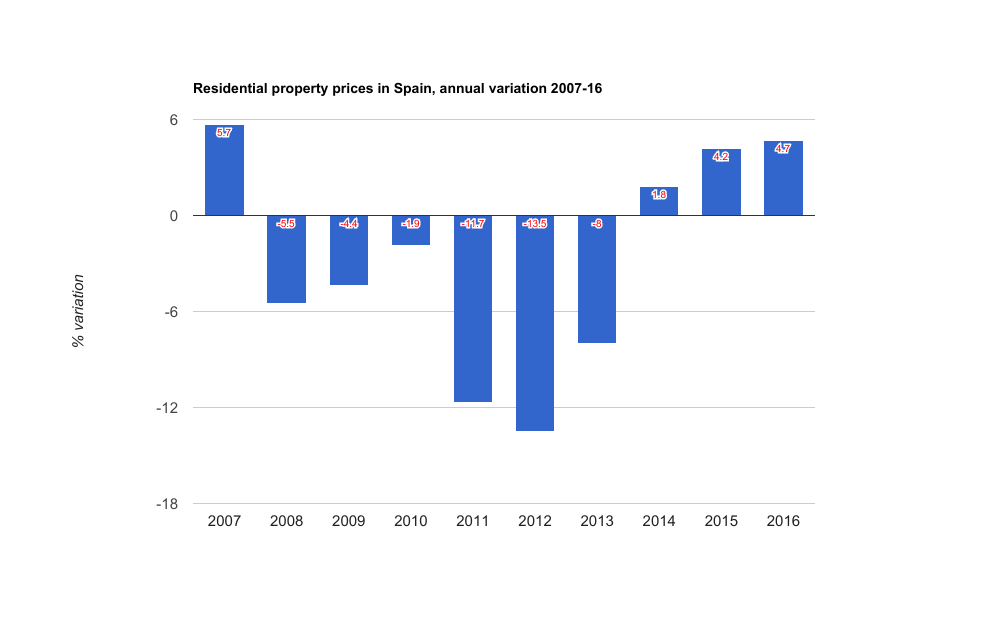
Terra Meridiana’s view: The ‘bad old days’ of double-digit growth, which led to prolonged price deflation as the national housing market collapsed, appear, thankfully, to be a thing of the past. While prices did rise by close to 5% last year, significantly above than the rate of inflation, this reflects renewed confidence among sellers in the residual value of Spanish property and a willingness by both domestic and overseas buyers to pay higher prices for what still seems to be competitively priced property, compared to other markets.
The Spanish mortgage market is growing, following large annual decreases for six years running
The total number of housing loans granted in Spain dropped by more than three-quarters (76.1%, to be exact, from 836,419 to 199,703) from 2008-13. Since 2014, however, the credit marketplace has been picking up pace, registering an annual gain of close to 6.4%, to top more than 260,000 new mortgages, last year.
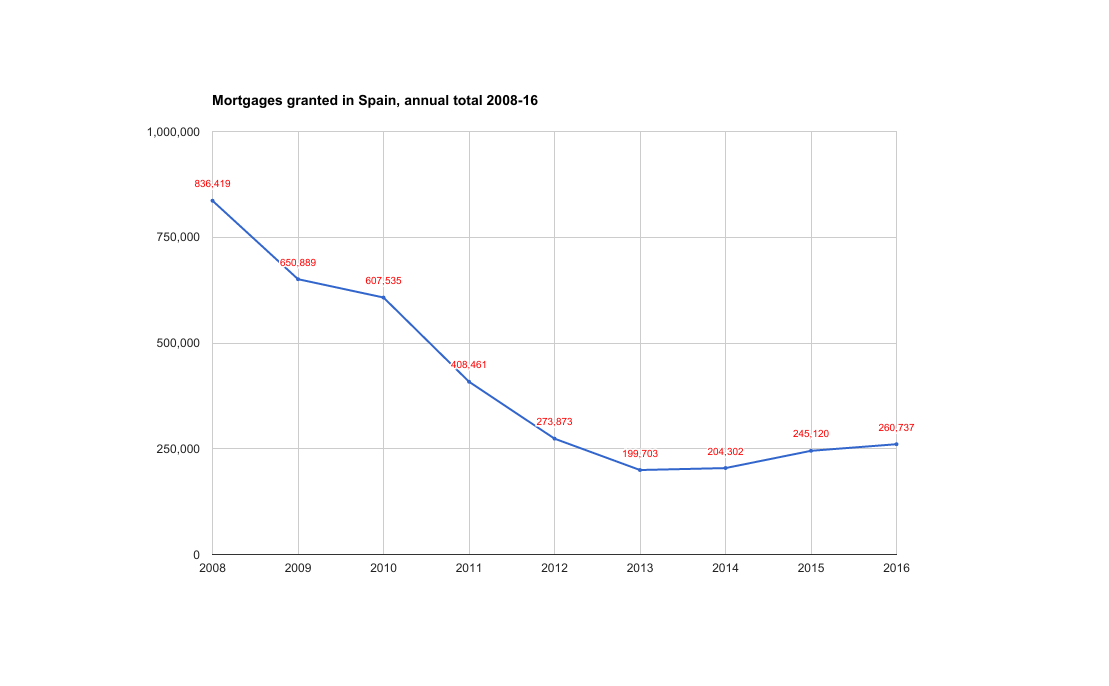
Terra Meridiana’s view: Spain’s banking sector has now emerged from the aftermath of the financial crisis, following major consolidation in the retail marketplace, and credit has begun to flow freely again, although low to no salary growth over the last few years continues to hamper national buyers. For the most part, overseas purchasers are not reliant on Spanish banks, hence the large gap between the number of homes sold and mortgages granted in the last 12 months.
Foreign purchasers account for an increasing share of sales in the Spanish market
For the eighth year in a row, the share of overseas purchasers has increased to now 13.25% of the total housing marketplace in Spain, representing a 212% jump compared to 2009, when just 4.24% of properties sold were bought by foreigners.
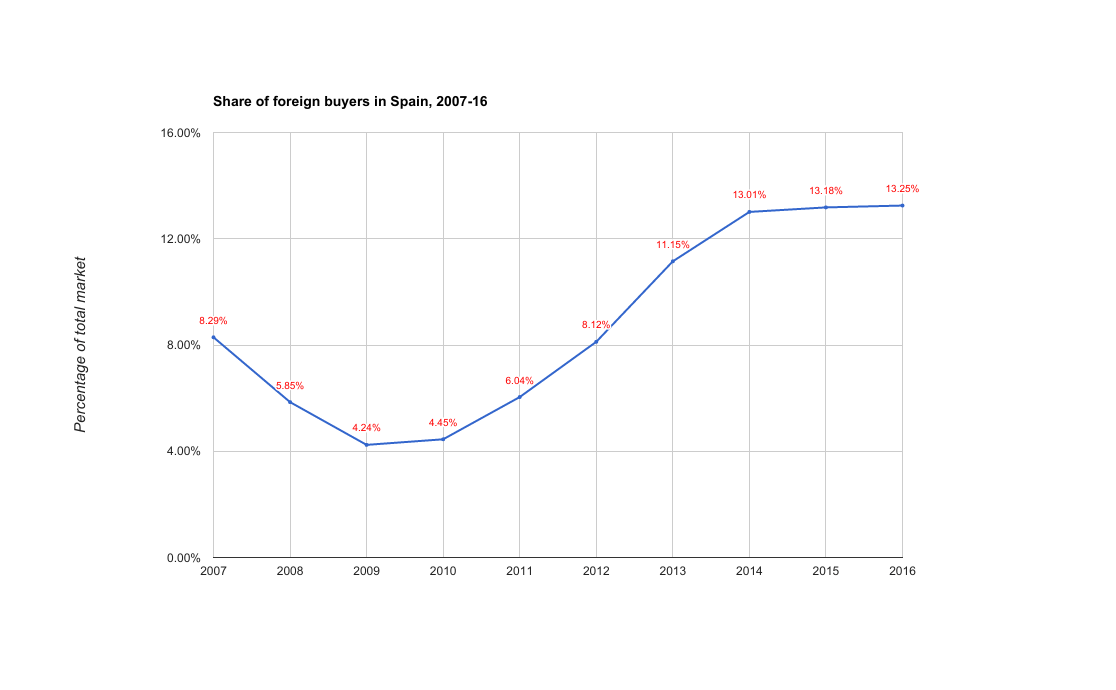
Terra Meridiana’s view: After a major drop-off in interest from overseas buyers compounded the collapse of domestic demand for Spanish property which started almost a decade ago, foreigners, particularly those not reliant on lending to purchase, have returned to the country in droves, registering double-digit annual growth rates over the past four years.
The Costa del Sol market for overseas buyers is dominated by Europeans and is still led by the British, despite Brexit uncertainty
In 2016, the share of foreign purchasers in the Andalucian property marketplace was higher than the national average, at just over 15%, although that was less than half the percentage of overseas buyers in the most popular areas of the country – the Balearic and the Canary Islands. British buyers continue to lead the pack, representing 26.8% of the total, followed the Swedes (11.2%), Belgians (7.7%), French (4.8%), and Germans (4.6%). In Malaga province, which encompasses the vast majority of Terra Meridiana’s markets, the share of overseas purchasers was more than one third (33.92%).
Terra Meridiana’s view: Despite the concerns caused by Brexit vote and the less favourable exchange rate of the of the pound sterling against the euro in the second semester of last year, British buyers continue to account for one in four of all sales in Andalucia, equivalent to the next four nationalities combined. The share of foreign buyers in Malaga is more than twice the regional average, second only to the provinces of Alicante and Tenerife.
By Adam Neale | Property News | May 26th, 2017
